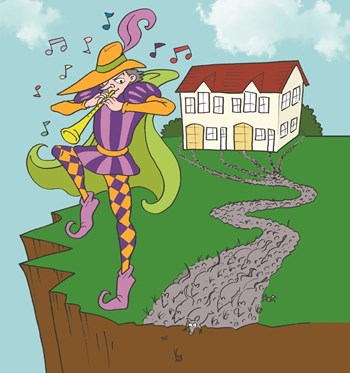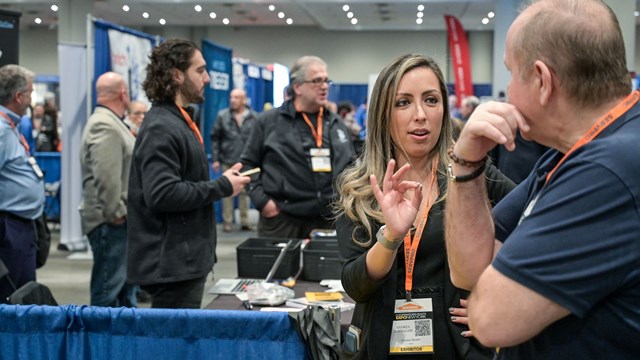
Jena Ball couldn't sleep—the noise was deafening and keeping her awake night after night. The racket wasn't coming from the next door neighbors, but instead was emanating from inside her condo wall. "It was bizarre," says Ball.
But even more bizarre was what was causing the sound. "Turns out, a hive of big black bees had bored into the outside walls of my unit," says Ball. "There were so many, the wall was actually warm to the touch. When the maintenance company found out, they sent in a special bee swat team. Apparently there are two varieties of these particular bees—one is noisy but harmless, but the other is very aggressive and their sting is toxic."
Ball was lucky—her bees were of the harmless variety, but the story is still frightening.
Whether you are living in a condo overseas or in the palm-treed communities of South Florida, pests are an inevitable nuisance that can damage both landscapes and homes. Whether it's raccoons causing mayhem amongst your trash cans, termites lunching on your clubhouse, birds using your adjacent golf course as their own porta-potty, or deer grazing placidly on your meticulously-groomed grounds, it's a year-round task to keep pests away and property intact.
In this case, keeping pests away can sometimes be as dangerous as having them around. You and your family can become exposed to the pesticides just like the bugs you’re trying to kill. According to studies by the Environmental Protection Agency, various pesticides have been shown to cause eye, skin and respiratory problems, allergic reactions, headaches, vomiting, diarrhea, muscle weakness, and more, among humans.
Times, though, have changed. Although battles continue with ever-present pests, the dawning of the Green Age has practically phased out toxic control methods in favor of more environmentally-friendly products and procedures.
What is That?!
First, it’s best to understand what type of pests you’re trying to eliminate inside and outside and what kind of damage they are causing. Then you can create an effective treatment plan.
“Florida is the buggiest state in the United States,” says Jim Maler, president and CEO of All Florida Pest Control & Fertilization, with offices in Miami, Orlando and Palm Beach. “South Florida is worse than the rest of Florida; new bugs are coming in all the time and service calls for ants, fleas, ticks, roaches and especially bedbugs have increased in the last year or so.”
Maler also explains that termites are a huge issue in Florida. “We’re the only place that has all four types of dry wood and three types of subterranean termites, including the most destructive termite in the world.”
On the landscape, Maler says that the chinch bug and fleas and ticks are common Sunshine State pests and recently a fichus white fly has been attacking trees. “It came from the Caribbean and tore right through the fichus trees and bushes,” he says. “Now the spiraling white fly is much worse because it’s larger, multiplies quicker, and attacks everything including palms, fichus bushes and trees, so we went from one bug that only attacks one type of plant to one that attacks everything.”
According to the University of Florida Cooperative Extension Program, the southern chinch bug is a difficult-to-control and damaging insect pest of St. Augustine grass. Its activity occurs from March through November in north-central Florida and is year-round in southern Florida. Damage may occur in open, sunny areas near sidewalks and driveways, but also in the middle of lawns, while infested plants have slower growth, turn yellow, then rusty reddish-brown, and die.
Robert Benham, general manager of Guarantee Floridian Pest Control in Miami says that bedbugs are fast becoming the most problematic pest in Southern Florida. “Our hands are full,” he says. “It’s becoming a bigger problem and makes having ants look like nothing.”
According to the National Pest Management Association, bedbugs feed only on the blood of humans and other warm-blooded hosts and are found in tight cracks and crevices and mattresses and box springs, hence the name. They arrive by hitchhiking in suitcases, boxes and shoes to be near a food supply and usually come out at night for a meal.
In most areas of the country, bug issues change from season to season, but in Florida that isn’t always the case. “Because it’s so warm here, we really don’t have a season change, but we had record cold temperatures (30s/40s) where it was enough to knock back the white fly, but it doesn’t knock them out all together,” says Maler. “If we did have more of a cold season we probably wouldn’t have the issues we have.”
Integrated Pest Management
Today, the eradication of any indoor and outdoor pests is called integrated pest management, or IPM.
“IPM is where we go into the home and monitor and find out what kind of problems the customer has,” says Benham. “That’s far more effective than whatever you’re going to put down at that point. By having the ability to identify the problem and treat the problem, it’s greener than going in and spreading everything.”
For example, let’s say your building has an ant infestation. Instead of a general spray, the IPM program focuses on knowing how they are getting into the building. Is there food around? Are there holes in a wall? These are the things that need to be taken care of first. No access? No food? No bugs.
With bedbugs, to slow the spread in a building, management should first remove clutter and dispose of any already-infested clutter, such as boxes, papers, toys and other objects in the common areas.
Orkin Technical Director and Entomologist Ron Harrison says that adult bedbugs can live for more than one year without feeding and sustain temperatures up to 113 degrees Fahrenheit as well as below freezing, which makes them difficult to control.
Extreme heat, in excess of 120 degrees and freezing can eliminate them. Harrison also explained that in multi-housing buildings a wide enough net needs to be cast, otherwise other areas of the building may be infested. The freezing treatment is used with Cryonite, a directional wand and CO2. The technician treats the surface, cracks and crevices with a blast of cold to freeze the bedbugs.
To eliminate termites, the Florida Agriculture and Consumer Services Commissioner reported that insecticides containing chlorpyrifos cannot be used for termite control as of January 1, 2006. At one time this product was the most widely used method for termite protection, but this use has been removed as a result of a federal registration action. The department has removed all products containing chlorpyrifos from the list of products registered for termite protection on its website.
And finally, to treat many already-existing pests, botanical-based sprays are recommended. “The majority of what you put in the house is bait and that’s a growth regulator,” says Benham.
For example, Benham says a non-chemical treatment of ants is boric acid. According to the EPA, as an insecticide, boric acid acts as stomach poisons in ants, cockroaches, silverfish and termites, while others abrade the exoskeletons of the insects. Boron occurs naturally in water, fruits, vegetables and forage crops, and is an essential nutrient for plants as well as an essential element for many organisms.
For some bugs, combinations of treatments may be used. “Bedbugs habitate around the beds, for example, so you would want an all-natural product,” says Maler. “We spray conventional products on walls and in cracks, but spray the bedding with cedar oil. It’s another powerful tool in the tool box.”
Outside Maler says the all-natural products do not last as long as traditional products, so the lawn needs to be sprayed more frequently. “There are plenty of people who don’t mind extra service as long as kids and pets are around safer stuff.”
Tree trunk injections are also another way of solving outdoor insect issues. They are considered environmentally friendly and cost effective since the injections are put directly into a tree’s vascular system. No spraying.
“If you’re spraying the heads of the palms, it’s drifting and chemicals are going into the air,” says Maler. “Recently we started injecting palms and trees with medicine and it’s much more of a potent result. The product goes directly into the trees as opposed to exposing the air.”
According to Arborjet in Massachusetts, the insecticide is injected into holes drilled in a tree's trunk. The chemical spreads through the tree over about four weeks and the tree is protected for two years.
Although studies have shown that there is a healthy benefit to using more environmentally-friendly products to get rid of pests, not everyone is convinced that it works. “Some people believe they have to smell it in order for the solution to be effective,” says Benham. “To convince them otherwise, we start with educating our customer. Honestly, no one really comes in and asks for it, they just want to get rid of the problem.”
Also, remember that not every company offers a completely non-toxic treatment for bedbugs or other pests, so discuss all of your options with your pest control company.
Lisa Iannucci is a freelance writer and a frequent contributor to The South Florida Cooperator.




Leave a Comment